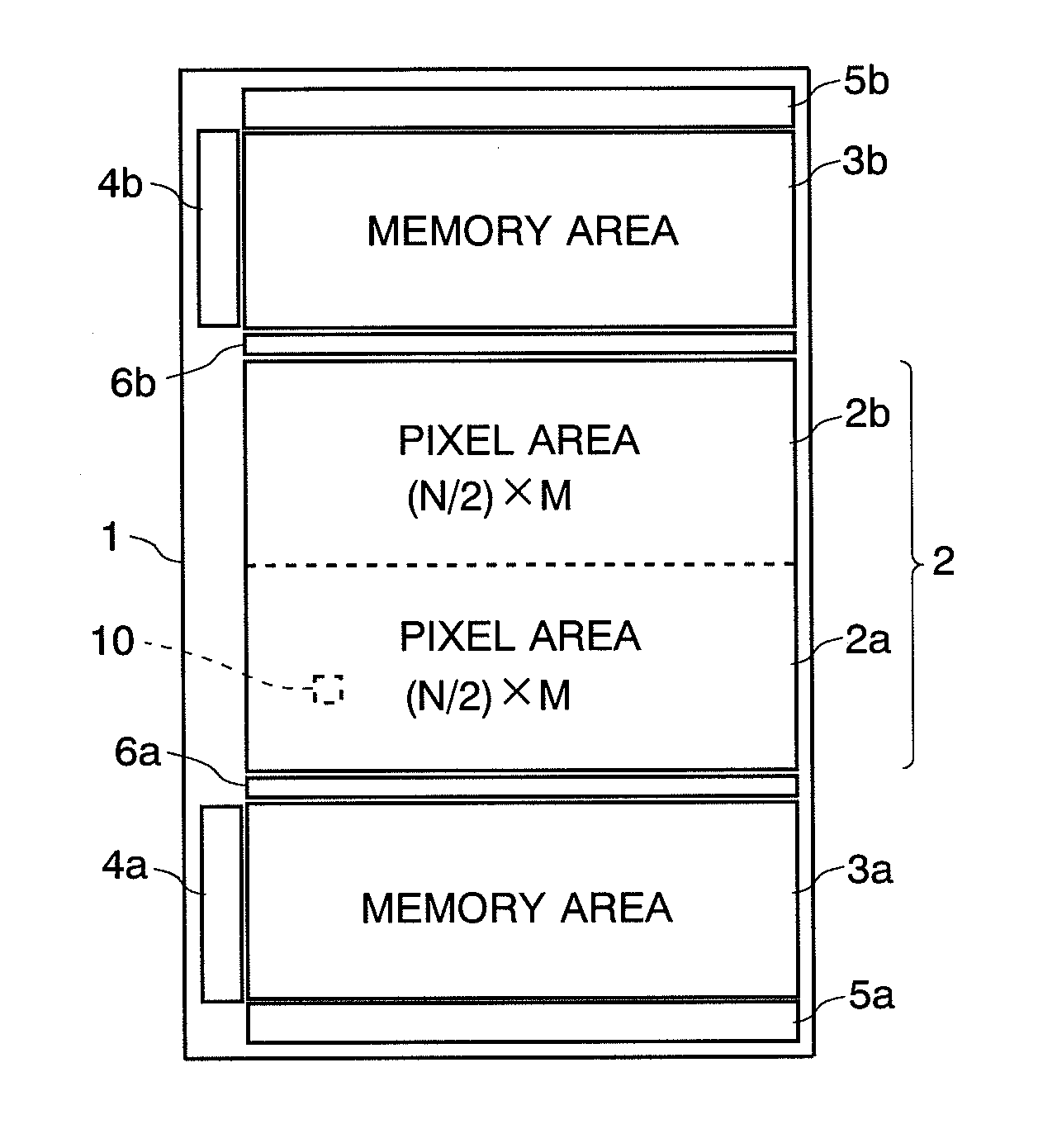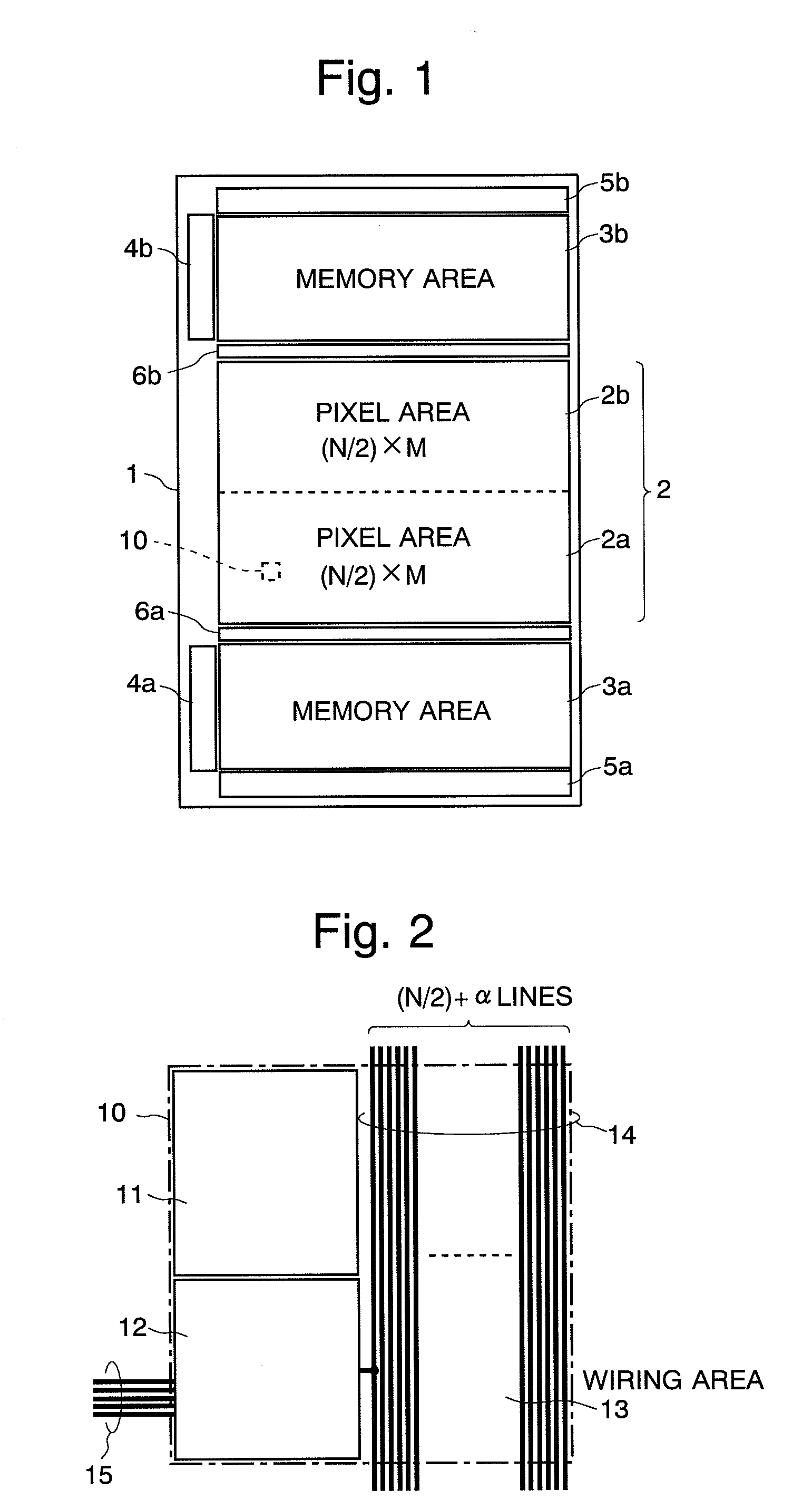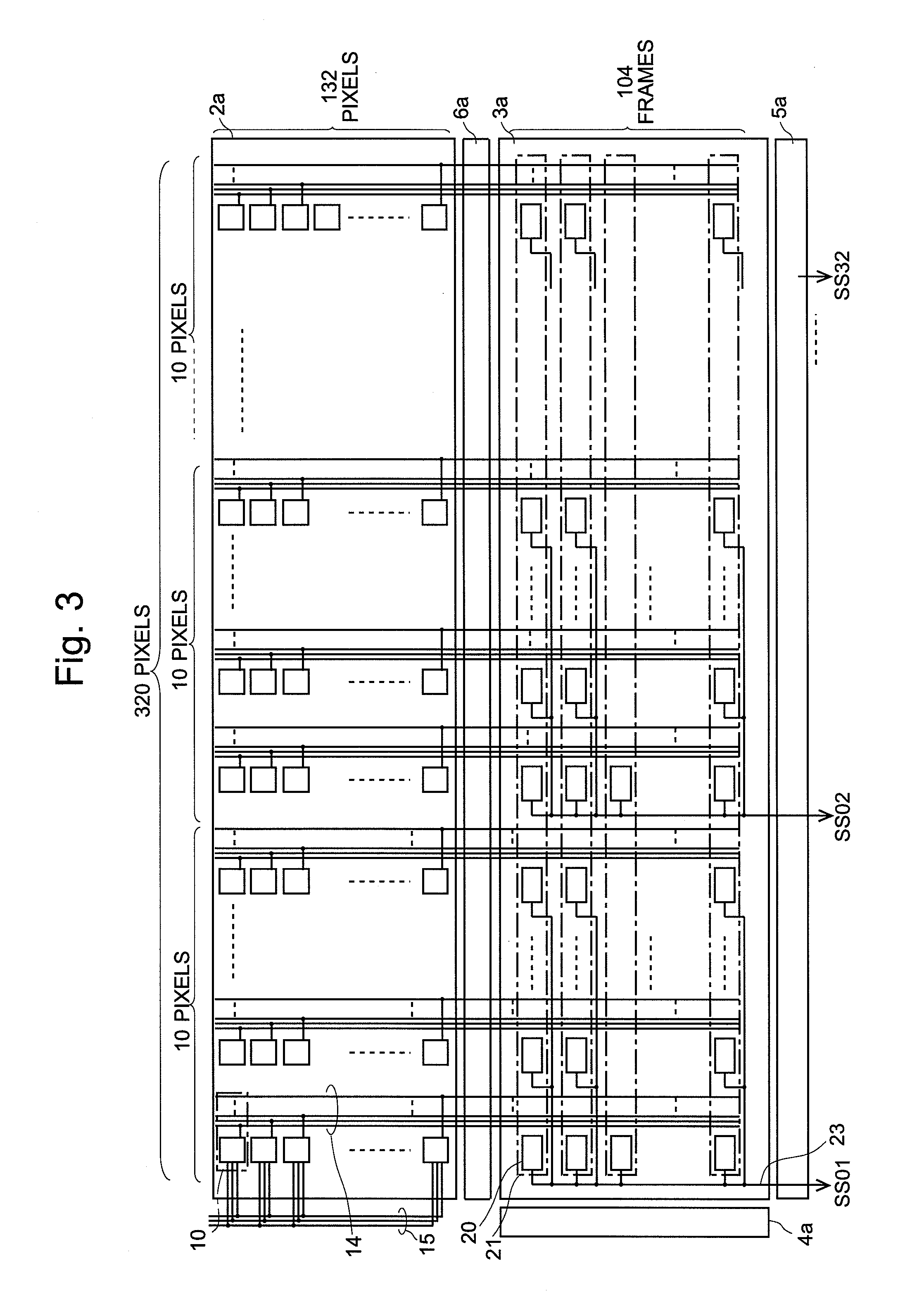Solid-state image sensor
a solid-state image and sensor technology, applied in the field of solid-state image sensors, can solve the problems of over-exceeding the upper limit of heat radiation, large power consumption, and high power consumption, and achieve the effects of suppressing power consumption, high speed, and high speed
- Summary
- Abstract
- Description
- Claims
- Application Information
AI Technical Summary
Benefits of technology
Problems solved by technology
Method used
Image
Examples
Embodiment Construction
[0106]A solid-state image sensor which is an embodiment of the present invention is hereinafter described with reference to the drawings.
[0107]An overall configuration and structure of the solid-state image sensor according to the present embodiment is initially described. FIG. 1 is a plan view showing the schematic layout on a semiconductor chip of the solid-state image sensor of the present embodiment, and FIG. 3 is a block diagram of the main portion in the solid-state image sensor of the present embodiment.
[0108]As shown in FIG. 1, in the present solid-state image sensor, the pixel area 2 (2a and 2b) for receiving light and producing signals for each pixel and the memory areas 3a and 3b for holding the signals for a predetermined number of frames are not intermixed but completely separated from each other on the semiconductor substrate 1 so that each area forms a definite block. Within the rectangular pixel area 2, a total of N×M pixels 10 consisting of N rows and M columns are ...
PUM
 Login to View More
Login to View More Abstract
Description
Claims
Application Information
 Login to View More
Login to View More - R&D
- Intellectual Property
- Life Sciences
- Materials
- Tech Scout
- Unparalleled Data Quality
- Higher Quality Content
- 60% Fewer Hallucinations
Browse by: Latest US Patents, China's latest patents, Technical Efficacy Thesaurus, Application Domain, Technology Topic, Popular Technical Reports.
© 2025 PatSnap. All rights reserved.Legal|Privacy policy|Modern Slavery Act Transparency Statement|Sitemap|About US| Contact US: help@patsnap.com



